Yes, because the locals have killed them. So no point in reintroductions now, there will just be more fresh leopard skins on chieftains.
SA licenses leopard hunting
- Richprins
- Committee Member
- Posts: 76096
- Joined: Sat May 19, 2012 3:52 pm
- Location: NELSPRUIT
- Contact:
Re: SA licenses leopard hunting
Like parts of the Drakensberg, some areas in our country have perfect leopard habitat but seem to have virtually no leopards, according to recent camera trap surveys6. Leopards that are earmarked for hunting could theoretically be used to repopulate these empty areas.
Yes, because the locals have killed them. So no point in reintroductions now, there will just be more fresh leopard skins on chieftains.
Yes, because the locals have killed them. So no point in reintroductions now, there will just be more fresh leopard skins on chieftains.
Please check Needs Attention pre-booking: https://africawild-forum.com/viewtopic.php?f=322&t=596
- Lisbeth
- Site Admin
- Posts: 67571
- Joined: Sat May 19, 2012 12:31 pm
- Country: Switzerland
- Location: Lugano
- Contact:
Re: SA licenses leopard hunting
LIcenses for chieftain hunting? 

"Education is the most powerful weapon which you can use to change the world." Nelson Mandela
The desire for equality must never exceed the demands of knowledge
The desire for equality must never exceed the demands of knowledge
- Lisbeth
- Site Admin
- Posts: 67571
- Joined: Sat May 19, 2012 12:31 pm
- Country: Switzerland
- Location: Lugano
- Contact:
Re: SA licenses leopard hunting
TROPHY KILLING ANALYSIS
Challenge to leopard hunting quota proof that the DFFE should change its spots
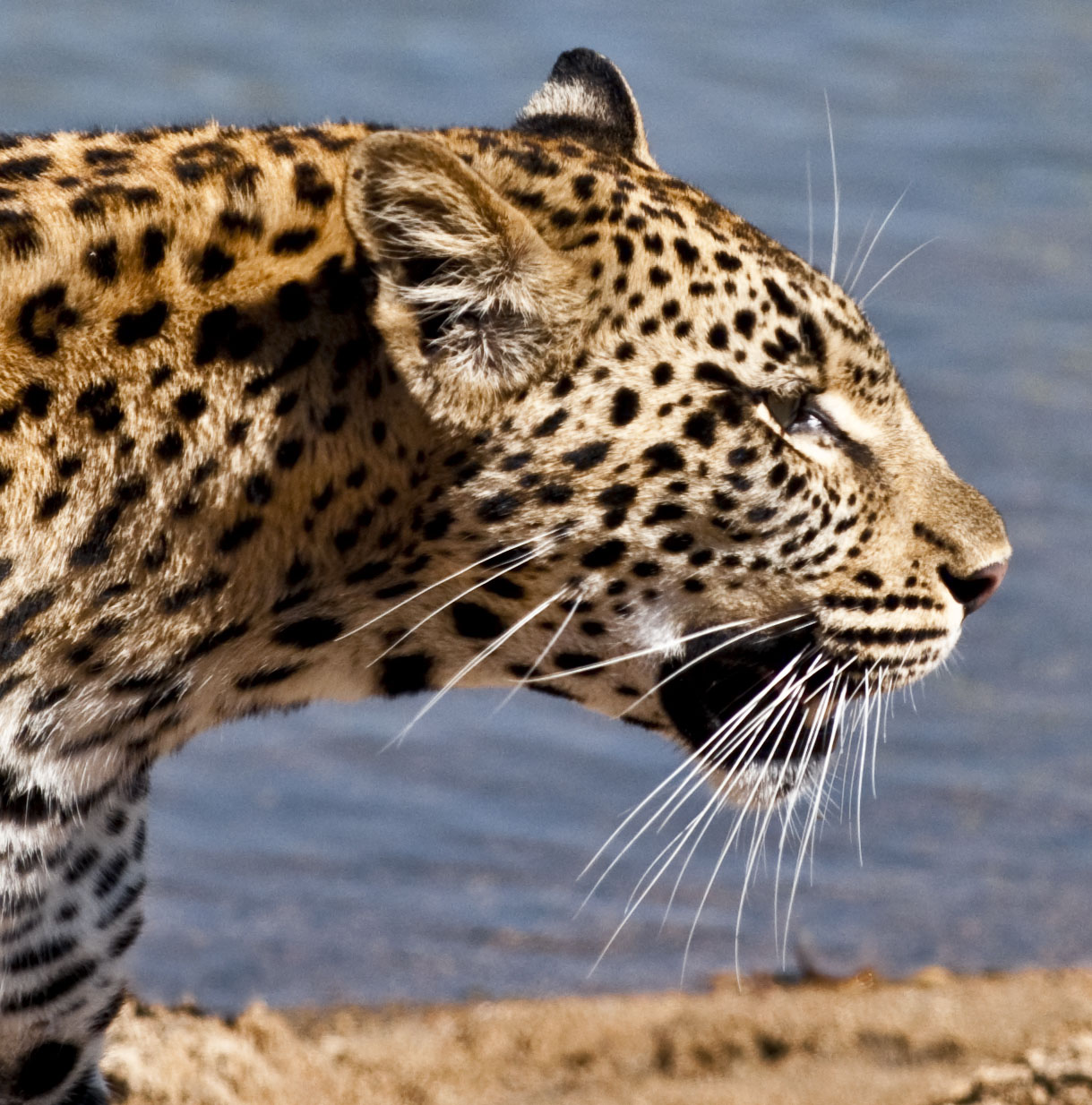
A leopard on the prowl. (Photo:Supplied)
By Don Pinnock | 16 Mar 2022
As numbers decline and persecution continues, South Africa has issued a quota for the trophy hunting of 10 leopards. But it may be illegal and is being challenged in the high court.
________________________________________________________________________________________________________________
It’s tough to be a leopard in South Africa. They were once classed as vermin and are still intensely persecuted in many areas. In the latest move, the government has issued a quota for 10 leopards, but an NGO is trying to stop this via a high court interdict.
Allowing leopards to be hunted is puzzling. Permission comes from the Department of Fisheries, Forestry and Environment (DFFE), but its own internal report (2022 “Status Quo Report”) notes that leopards are being killed illegally or legally as damage-causing animals and by trophy hunters. They are also dying from snares, poisoning, retaliatory killings, poor capture techniques and even unethical collaring procedures for research. Their skins are in demand by traditional churches.
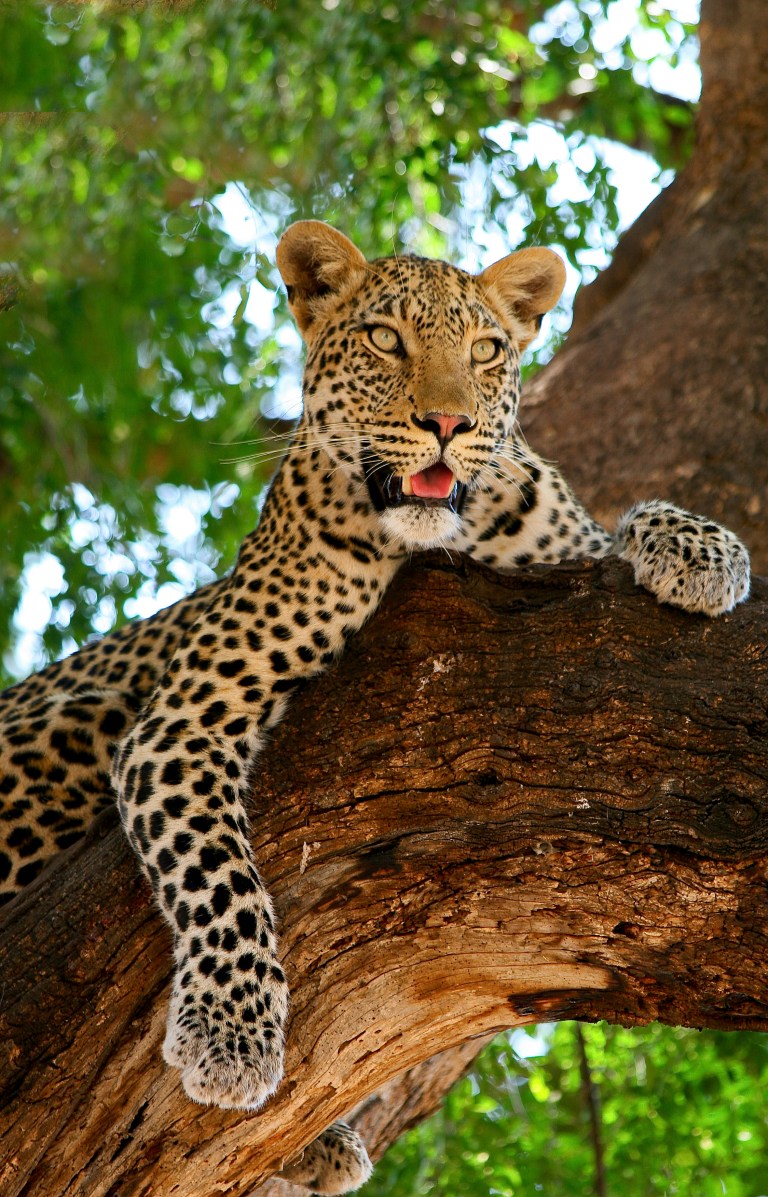
Trees are where leopards can relax away from the threat of lions or hyenas. (Photo: Supplied)
In this report, DFFE says there’s no reliable estimate of the number of leopards in the country, which contradicts its statement in the quota announcement that there’s “reliable and robust scientific data”. There is also no reliable number for the extent of illegal killing. So-called damage-causing animal deaths are not accurately recorded and seemingly ignored in quota calculations.
“Some stable populations,” says the report, “appear to be well below their potential capacities, while other areas with prime leopard habitat seem to no longer have functioning leopard populations.
“It must be cautioned that many of these sites were biased to where leopard status was relatively positive and well protected, so it can be inferred that leopard densities are even lower in other areas not surveyed where threats may be higher.”
So on what basis has DFFE issued a quota? The conservation organisation Humane Society International/Africa (HSI/Africa) wants to know before the guns come out. It has applied for an interdict in the Western Cape High Court to have the quota set aside and fully reviewed, claiming they’re illegal in terms of the National Environmental Management Biodiversity Act (Nemba).
This act requires that there be public consultation before issue (there was none). There was, says HSI-Africa, also no consideration of the welfare of the animals.
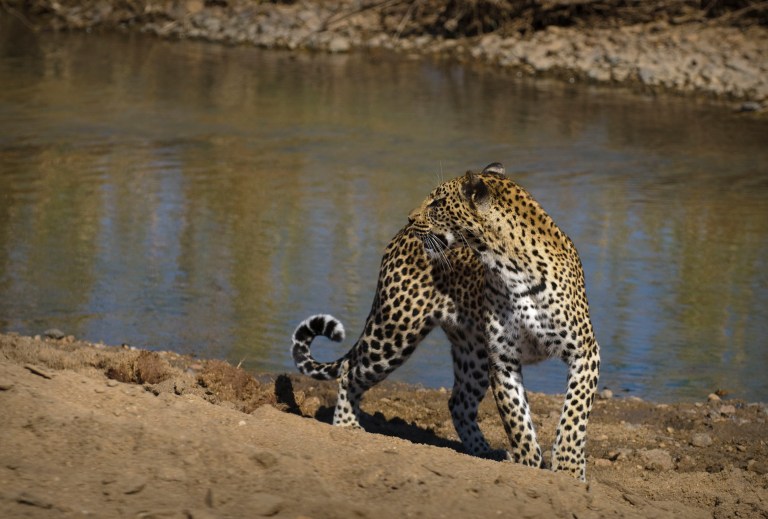
The leopard is the perfect example of power and grace and a powerful symbol of the earth’s wild places. (Photo: Supplied)
Furthermore, it was illegal to simply roll forward the 2021 quota and the SA Scientific Authority had not provided the necessary data proving that killing them would not be detrimental to the species (called a non-detrimental finding — NDF). It says the minister cannot issue a hunting quota without such an NDF.
Leopards are among the most elusive predators and live mostly outside national parks. They have a low reproductive rate, their distribution is fragmented, there’s little control of harvesting, official incentives for conservation are low and only between 5% and 15% of their habitat is protected.
“The long-term viability of the leopard population within the assessment region,” says the DFFE report, “may be at risk due to trophy hunting and retaliatory killings. Although there is a low risk of extinction over the next 25 years, there is a very high probability of population decline.”
For all of these reasons, the state of leopards in South Africa should be ringing conservation alarm bells, not providing the basis for trophy hunting quotas (most allocated in Limpopo and North West). Internationally, they are afforded the highest protection — Appendix 1 by the World Conservation Union trade organisation Cites and listed as vulnerable on the Red List of the International Union for the Conservation of Nature (IUCN).
Where will leopard body parts be going? You probably guessed: by a long way, most go to the United States, followed by France, China and Mexico. They’ll be exported variously as full mounts, skulls, skins, rug mounts and “floating bones”.
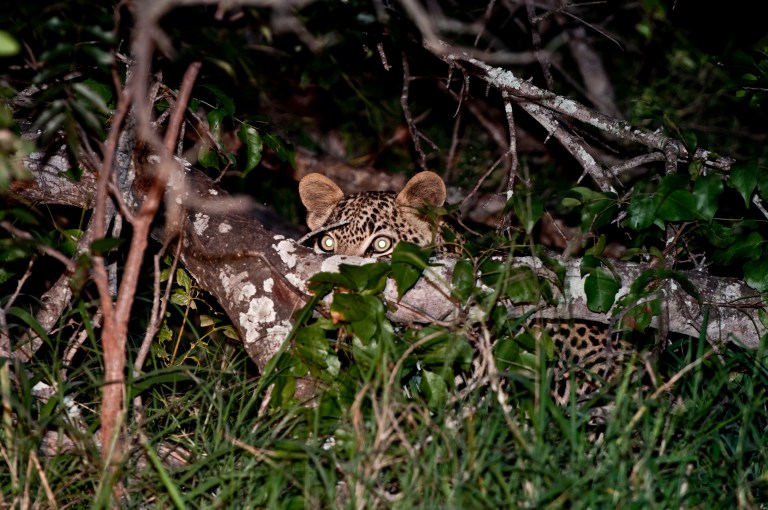
Leopards have definite personalities — bold or bloody-minded, tranquil or timid. (Photo: Supplied)
There’s also an identification issue. The latest quota requires that no leopard under the age of seven years or a female may be hunted. This has been criticised as flawed by many researchers and conservation organisations.
According to the Wildlife Animal Protection Forum (WAPFSA), no research validates that claim. Leopards can live for up to 13 years in protected environments and will only establish a stable territory when they’re six or seven and mate. Shooting them at this age, says WAPFSA, will create havoc and infanticide when a new male takes over and kills cubs.
In addition, hunting generally happens at night at a bait site. Sexing and ageing the animal under those conditions by even experienced hunters is difficult.
“The ability to accurately sex and age leopards in real life in the field,” says WAPFSA, “is not possible, implementable or policeable. We suggest that the seven-year threshold to kill males is opinion masquerading as fact and should be rejected.”
There’s a precedent for a zero hunting quota. Back in 2016, the SA National Biodiversity Institute (Sanbi), which advises DFFE, proposed that no leopard hunting take place that year and gave cogent reasons. Incentives to conserve them, it said, were declining and methods used to monitor leopard populations and determine a quota were scientifically flawed.
A precautionary principle had not been applied and minimum conservation management standards for implementation of a quota were lacking. Retaliatory killing and their illegal skin trade were “reason enough to institute a zero hunting quota.” In 2016, 2017 and 2019 the minister followed Sanbi’s reasoning and banned leopard trophy hunting.
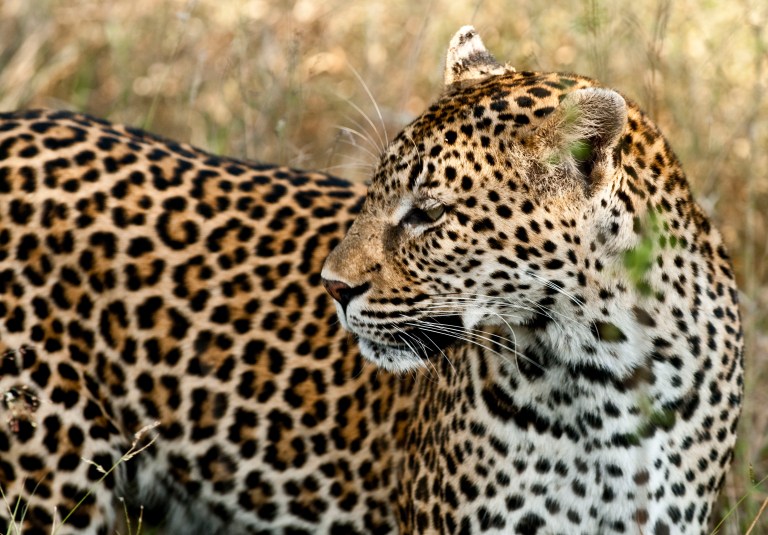
A leopard on the prowl. (Photo: Supplied)
A DFFE submission to Cites in 2018 noted that “results from our latest year of camera trapping paint a bleak picture of leopard population status in South Africa. Most monitored populations are declining … and the few that are stable appear to be well below their potential ecological capacity.
“Indeed, leopards appear to have been extirpated — at least functionally — from several sites across the country. Population growth across all sites in South Africa (suggests) an average population decline of 11% per year.”
Nothing’s changed since then, other than a continued decline of the population. So setting the quota seems counter-intuitive. To understand it, you need to view leopards through the DFFE’s candy coloured spectacles of sustainable use.
This perspective was spelt out in the report of its High-Level Panel on lions, elephants, rhinos and leopards, issued to great fanfare in May 2021. The report was progressive on many issues — but not on leopards.
Here are some of its points that suggest either a blind spot by the High-Level Panel, a trade-off against banning lion farming or extreme lobbying from the hunting industry:
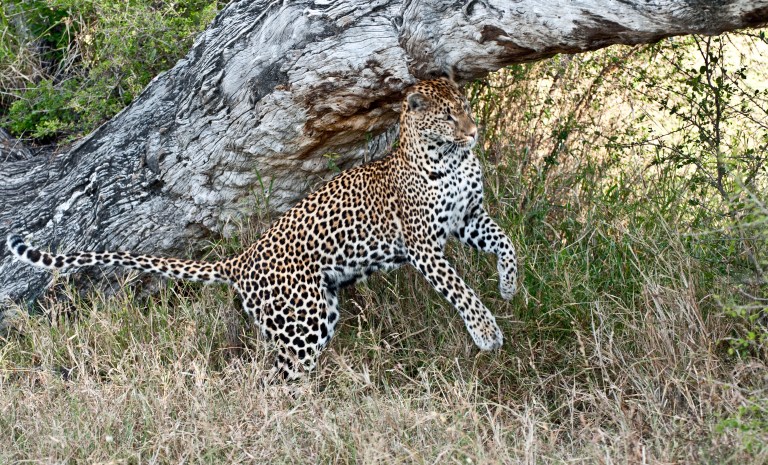
A leopard wil spend much of its time scent-marking, using glands on its face and squirts of urine to announce its presence. (Photo: Supplied)
So there you have it. Leopards may be vulnerable, unknown in number though clearly in decline, hunted, trapped, poisoned and of great concern to international bodies worried about their future.
However, in South Africa, you can shoot them, skin them, eat them, wear them and mount their heads above your fireplace and grace your lounge with their beautiful, speckled skins.
Meanwhile, the DFFE is attempting to equate “authentic” hunting (whatever that may mean) with a recommended move towards a welfare approach. As a bullet slams into him, a leopard may have some trouble understanding the distinction.
But, in recognition that this requires proper evaluation (and to keep critics quiet), the Leopard Advisory Forum has been created. It has been split between NGOs and the hunting industry and never the twain shall meet. But after three meetings the department is yet to decide on terms of reference. What it decides, if it ever does, may soon be overtaken by a high court finding. DM
Challenge to leopard hunting quota proof that the DFFE should change its spots

A leopard on the prowl. (Photo:Supplied)
By Don Pinnock | 16 Mar 2022
As numbers decline and persecution continues, South Africa has issued a quota for the trophy hunting of 10 leopards. But it may be illegal and is being challenged in the high court.
________________________________________________________________________________________________________________
It’s tough to be a leopard in South Africa. They were once classed as vermin and are still intensely persecuted in many areas. In the latest move, the government has issued a quota for 10 leopards, but an NGO is trying to stop this via a high court interdict.
Allowing leopards to be hunted is puzzling. Permission comes from the Department of Fisheries, Forestry and Environment (DFFE), but its own internal report (2022 “Status Quo Report”) notes that leopards are being killed illegally or legally as damage-causing animals and by trophy hunters. They are also dying from snares, poisoning, retaliatory killings, poor capture techniques and even unethical collaring procedures for research. Their skins are in demand by traditional churches.

Trees are where leopards can relax away from the threat of lions or hyenas. (Photo: Supplied)
In this report, DFFE says there’s no reliable estimate of the number of leopards in the country, which contradicts its statement in the quota announcement that there’s “reliable and robust scientific data”. There is also no reliable number for the extent of illegal killing. So-called damage-causing animal deaths are not accurately recorded and seemingly ignored in quota calculations.
“Some stable populations,” says the report, “appear to be well below their potential capacities, while other areas with prime leopard habitat seem to no longer have functioning leopard populations.
“It must be cautioned that many of these sites were biased to where leopard status was relatively positive and well protected, so it can be inferred that leopard densities are even lower in other areas not surveyed where threats may be higher.”
So on what basis has DFFE issued a quota? The conservation organisation Humane Society International/Africa (HSI/Africa) wants to know before the guns come out. It has applied for an interdict in the Western Cape High Court to have the quota set aside and fully reviewed, claiming they’re illegal in terms of the National Environmental Management Biodiversity Act (Nemba).
This act requires that there be public consultation before issue (there was none). There was, says HSI-Africa, also no consideration of the welfare of the animals.

The leopard is the perfect example of power and grace and a powerful symbol of the earth’s wild places. (Photo: Supplied)
Furthermore, it was illegal to simply roll forward the 2021 quota and the SA Scientific Authority had not provided the necessary data proving that killing them would not be detrimental to the species (called a non-detrimental finding — NDF). It says the minister cannot issue a hunting quota without such an NDF.
Leopards are among the most elusive predators and live mostly outside national parks. They have a low reproductive rate, their distribution is fragmented, there’s little control of harvesting, official incentives for conservation are low and only between 5% and 15% of their habitat is protected.
“The long-term viability of the leopard population within the assessment region,” says the DFFE report, “may be at risk due to trophy hunting and retaliatory killings. Although there is a low risk of extinction over the next 25 years, there is a very high probability of population decline.”
For all of these reasons, the state of leopards in South Africa should be ringing conservation alarm bells, not providing the basis for trophy hunting quotas (most allocated in Limpopo and North West). Internationally, they are afforded the highest protection — Appendix 1 by the World Conservation Union trade organisation Cites and listed as vulnerable on the Red List of the International Union for the Conservation of Nature (IUCN).
Where will leopard body parts be going? You probably guessed: by a long way, most go to the United States, followed by France, China and Mexico. They’ll be exported variously as full mounts, skulls, skins, rug mounts and “floating bones”.

Leopards have definite personalities — bold or bloody-minded, tranquil or timid. (Photo: Supplied)
There’s also an identification issue. The latest quota requires that no leopard under the age of seven years or a female may be hunted. This has been criticised as flawed by many researchers and conservation organisations.
According to the Wildlife Animal Protection Forum (WAPFSA), no research validates that claim. Leopards can live for up to 13 years in protected environments and will only establish a stable territory when they’re six or seven and mate. Shooting them at this age, says WAPFSA, will create havoc and infanticide when a new male takes over and kills cubs.
In addition, hunting generally happens at night at a bait site. Sexing and ageing the animal under those conditions by even experienced hunters is difficult.
“The ability to accurately sex and age leopards in real life in the field,” says WAPFSA, “is not possible, implementable or policeable. We suggest that the seven-year threshold to kill males is opinion masquerading as fact and should be rejected.”
There’s a precedent for a zero hunting quota. Back in 2016, the SA National Biodiversity Institute (Sanbi), which advises DFFE, proposed that no leopard hunting take place that year and gave cogent reasons. Incentives to conserve them, it said, were declining and methods used to monitor leopard populations and determine a quota were scientifically flawed.
A precautionary principle had not been applied and minimum conservation management standards for implementation of a quota were lacking. Retaliatory killing and their illegal skin trade were “reason enough to institute a zero hunting quota.” In 2016, 2017 and 2019 the minister followed Sanbi’s reasoning and banned leopard trophy hunting.

A leopard on the prowl. (Photo: Supplied)
A DFFE submission to Cites in 2018 noted that “results from our latest year of camera trapping paint a bleak picture of leopard population status in South Africa. Most monitored populations are declining … and the few that are stable appear to be well below their potential ecological capacity.
“Indeed, leopards appear to have been extirpated — at least functionally — from several sites across the country. Population growth across all sites in South Africa (suggests) an average population decline of 11% per year.”
Nothing’s changed since then, other than a continued decline of the population. So setting the quota seems counter-intuitive. To understand it, you need to view leopards through the DFFE’s candy coloured spectacles of sustainable use.
This perspective was spelt out in the report of its High-Level Panel on lions, elephants, rhinos and leopards, issued to great fanfare in May 2021. The report was progressive on many issues — but not on leopards.
Here are some of its points that suggest either a blind spot by the High-Level Panel, a trade-off against banning lion farming or extreme lobbying from the hunting industry:
- Leverage added-value benefit of hunting leopard to enhance, broaden and transform the hunting industry.
- Implement mechanisms to ensure traditional leaders and traditional healers can access leopard parts and derivatives.
- Popularise an understanding of the conservation value of leopards as well as their contribution to the economy such as through eco-tourism, as well as the potential from hunting.
- Develop a strategic approach to leopard management in communal areas and greater authority for traditional leaders in conservation and sustainable use.
- Develop collective leopard conservation and management zones that are large enough to allow for sustainable harvesting.
- Legitimise the use of leopard products for traditional healers and the use of leopard skins for traditional leadership and traditional practice.
- Investigate trophy hunting of damage-causing animals.
- Develop and implement a national responsible and sustainable hunting standard.
- Investigate incentive schemes for leopard friendly products and meat in the same manner as for dolphin-friendly tuna and badger-friendly honey.

A leopard wil spend much of its time scent-marking, using glands on its face and squirts of urine to announce its presence. (Photo: Supplied)
So there you have it. Leopards may be vulnerable, unknown in number though clearly in decline, hunted, trapped, poisoned and of great concern to international bodies worried about their future.
However, in South Africa, you can shoot them, skin them, eat them, wear them and mount their heads above your fireplace and grace your lounge with their beautiful, speckled skins.
Meanwhile, the DFFE is attempting to equate “authentic” hunting (whatever that may mean) with a recommended move towards a welfare approach. As a bullet slams into him, a leopard may have some trouble understanding the distinction.
But, in recognition that this requires proper evaluation (and to keep critics quiet), the Leopard Advisory Forum has been created. It has been split between NGOs and the hunting industry and never the twain shall meet. But after three meetings the department is yet to decide on terms of reference. What it decides, if it ever does, may soon be overtaken by a high court finding. DM
"Education is the most powerful weapon which you can use to change the world." Nelson Mandela
The desire for equality must never exceed the demands of knowledge
The desire for equality must never exceed the demands of knowledge
- Peter Betts
- Posts: 3084
- Joined: Fri Jun 01, 2012 9:28 am
- Country: RSA
- Contact:
Re: SA licenses leopard hunting
Forgive them because they havent a Clue what they are doing >> Someone is paying a lot of money >> think Safari Club International, Dallas Safari Club, NRA Thats how we operate here >> Bring the Well Stuffed Brown Paper Envelope .. Its Embarressing as NOthing will be done about it
- Lisbeth
- Site Admin
- Posts: 67571
- Joined: Sat May 19, 2012 12:31 pm
- Country: Switzerland
- Location: Lugano
- Contact:
Re: SA licenses leopard hunting
Animal protection NGO stops trophy hunt quotas – for now
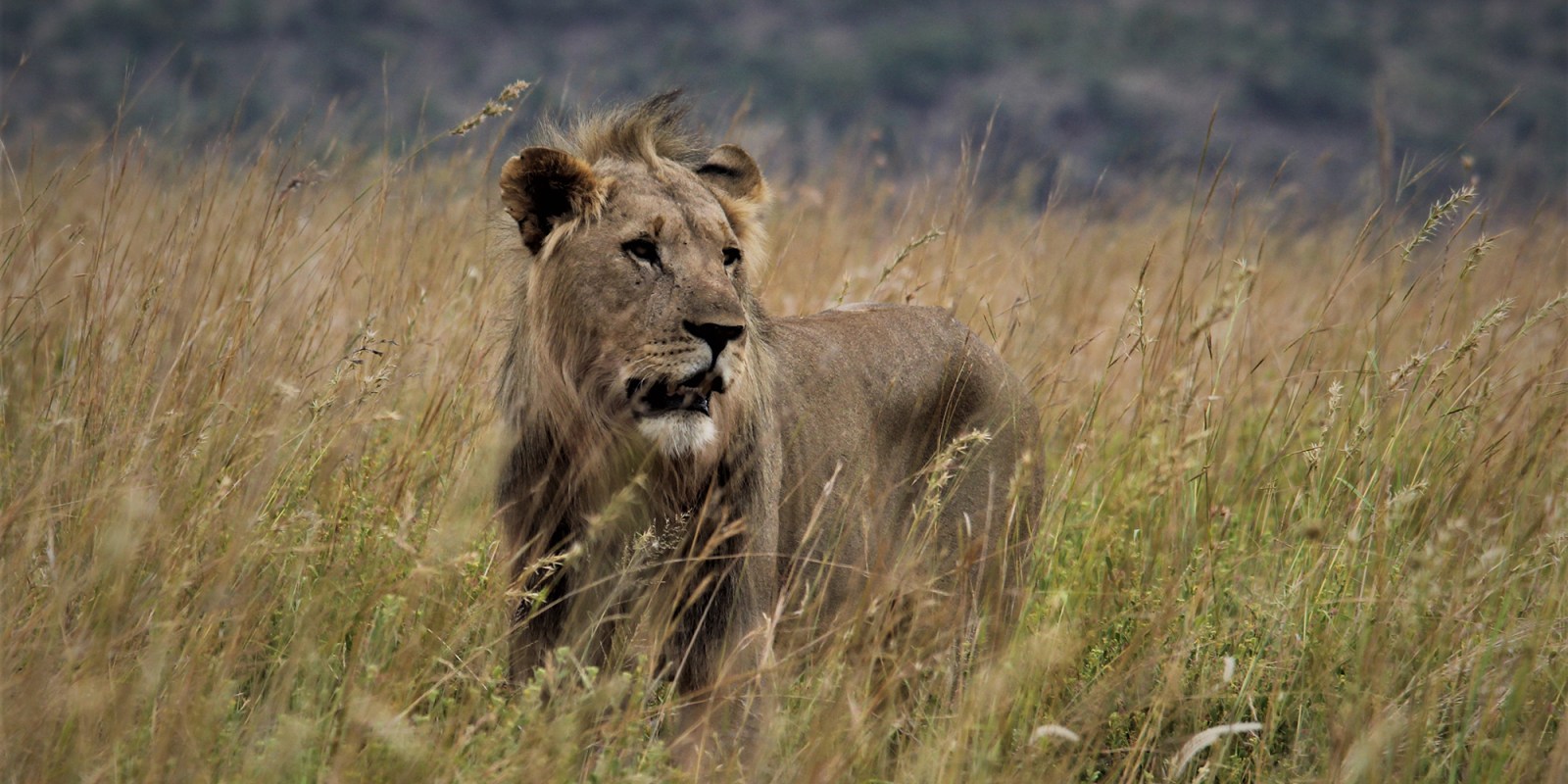
Lions are among the top five species exported as trophies from South Africa (Photo: Nel Botha / Pixabay)
By Don Pinnock | 26 Apr 2022
The decision by the Department of Forestry, Fisheries and the Environment to issue quotas to trophy-hunt leopards, black rhinos and elephants has been suspended by court order.
_______________________________________________________________________________________________________________________
The Western Cape High Court has blocked the issuing of quotas to hunt 10 leopards, 10 black rhinos and 150 elephants following an application by the Humane Society International/Africa, provisionally agreeing that they were invalid and unlawful.
Final judgment will be determined in a second part of the case, which is to follow. But for now, no quotas may be issued by Environment Minister Barbara Creecy.
The court concurred with HSI/Africa that Creecy’s department was not permitted to defer the 2021 quotas to 2022, as it had attempted to, because this was not authorised under regulations on international trade of these species and also violated the common law principle of legitimate expectation. It also found that:
The Department of Forestry, Fisheries and the Environment failed to comply with the required public participation conditions;
The quota announcement was not published in the Government Gazette; and
The minister was not permitted to issue a quota for trophy hunting when there was no scientific proof that such hunts would not be detrimental to the species.
In his findings, Judge Patrick Gamble pointed out that if the interdict was granted, the lives of 170 wild animals would be spared pending the final hearing of the review. If the review was successful but the interdict was not granted, the protected animals would have been killed, their rights violated and their populations irreversibly affected.
If the review fails, he said, the quota will still stand. Then “the desire of the fortunate few who can afford to hunt protected animals exclusively for the purpose of transporting their trophies for display overseas will not have been lost, only delayed”.
The executive director for HSI/Africa, Tony Gerrans, welcomed the high court’s ruling. It enabled the terms by which the quota allocations were determined to be fully reviewed. “We are thankful that the high court recognises that the killing of our threatened, vulnerable and critically endangered wildlife cannot continue while this matter is heard.”
What the decision means is that, until the review is undertaken by the court, the department may not issue any quotas to hunt the three species, may not publish quotas in the Government Gazette and may not permit the export of their trophies.
It’s a considerable victory for conservation NGOs fighting for the welfare of animals in South Africa and an end to trophy hunting. They point out that leopards are categorised as vulnerable on the Red List of Threatened Species, black rhinos are critically endangered and elephant numbers across Africa have plummeted. Issuing licences to hunt them is bizarre.
South Africa is the world’s second-largest exporter of hunting trophies, accounting for 16% of the global total – an average of 4,204 a year. This is 50% more than Africa’s second-largest exporter, Namibia, and more than three times that of Africa’s third-largest exporter, Zimbabwe.
Between 2014 and 2018 South Africa exported 574 leopard trophies (98% of them wild-sourced), 1,337 elephant trophies (virtually all wild-sourced) and 21 black rhino trophies (all wild-sourced).
The top five species exported as trophies from South Africa are lions (mostly captive), chacma baboons, southern lechwes (captive, non-native), caracals and vervet monkeys. Most foreign hunters come from the US, and the rest from Russia, Denmark, Canada, Mexico, Germany, Hungary, Sweden and France.
According to the 2022 Good Governance Report dealing with trophy hunting, the South African government’s apparent commitment to trophy hunting “neither considers the opportunity costs associated with the practice nor its negative externalities”.
It adds that while trophy hunting may generate some economic benefit, this is hardly enough to substantiate the overall harm that it does, or to promote it as a conservation mechanism. DM/OBP

Lions are among the top five species exported as trophies from South Africa (Photo: Nel Botha / Pixabay)
By Don Pinnock | 26 Apr 2022
The decision by the Department of Forestry, Fisheries and the Environment to issue quotas to trophy-hunt leopards, black rhinos and elephants has been suspended by court order.
_______________________________________________________________________________________________________________________
The Western Cape High Court has blocked the issuing of quotas to hunt 10 leopards, 10 black rhinos and 150 elephants following an application by the Humane Society International/Africa, provisionally agreeing that they were invalid and unlawful.
Final judgment will be determined in a second part of the case, which is to follow. But for now, no quotas may be issued by Environment Minister Barbara Creecy.
The court concurred with HSI/Africa that Creecy’s department was not permitted to defer the 2021 quotas to 2022, as it had attempted to, because this was not authorised under regulations on international trade of these species and also violated the common law principle of legitimate expectation. It also found that:
The Department of Forestry, Fisheries and the Environment failed to comply with the required public participation conditions;
The quota announcement was not published in the Government Gazette; and
The minister was not permitted to issue a quota for trophy hunting when there was no scientific proof that such hunts would not be detrimental to the species.
In his findings, Judge Patrick Gamble pointed out that if the interdict was granted, the lives of 170 wild animals would be spared pending the final hearing of the review. If the review was successful but the interdict was not granted, the protected animals would have been killed, their rights violated and their populations irreversibly affected.
If the review fails, he said, the quota will still stand. Then “the desire of the fortunate few who can afford to hunt protected animals exclusively for the purpose of transporting their trophies for display overseas will not have been lost, only delayed”.
The executive director for HSI/Africa, Tony Gerrans, welcomed the high court’s ruling. It enabled the terms by which the quota allocations were determined to be fully reviewed. “We are thankful that the high court recognises that the killing of our threatened, vulnerable and critically endangered wildlife cannot continue while this matter is heard.”
What the decision means is that, until the review is undertaken by the court, the department may not issue any quotas to hunt the three species, may not publish quotas in the Government Gazette and may not permit the export of their trophies.
It’s a considerable victory for conservation NGOs fighting for the welfare of animals in South Africa and an end to trophy hunting. They point out that leopards are categorised as vulnerable on the Red List of Threatened Species, black rhinos are critically endangered and elephant numbers across Africa have plummeted. Issuing licences to hunt them is bizarre.
South Africa is the world’s second-largest exporter of hunting trophies, accounting for 16% of the global total – an average of 4,204 a year. This is 50% more than Africa’s second-largest exporter, Namibia, and more than three times that of Africa’s third-largest exporter, Zimbabwe.
Between 2014 and 2018 South Africa exported 574 leopard trophies (98% of them wild-sourced), 1,337 elephant trophies (virtually all wild-sourced) and 21 black rhino trophies (all wild-sourced).
The top five species exported as trophies from South Africa are lions (mostly captive), chacma baboons, southern lechwes (captive, non-native), caracals and vervet monkeys. Most foreign hunters come from the US, and the rest from Russia, Denmark, Canada, Mexico, Germany, Hungary, Sweden and France.
According to the 2022 Good Governance Report dealing with trophy hunting, the South African government’s apparent commitment to trophy hunting “neither considers the opportunity costs associated with the practice nor its negative externalities”.
It adds that while trophy hunting may generate some economic benefit, this is hardly enough to substantiate the overall harm that it does, or to promote it as a conservation mechanism. DM/OBP
"Education is the most powerful weapon which you can use to change the world." Nelson Mandela
The desire for equality must never exceed the demands of knowledge
The desire for equality must never exceed the demands of knowledge


